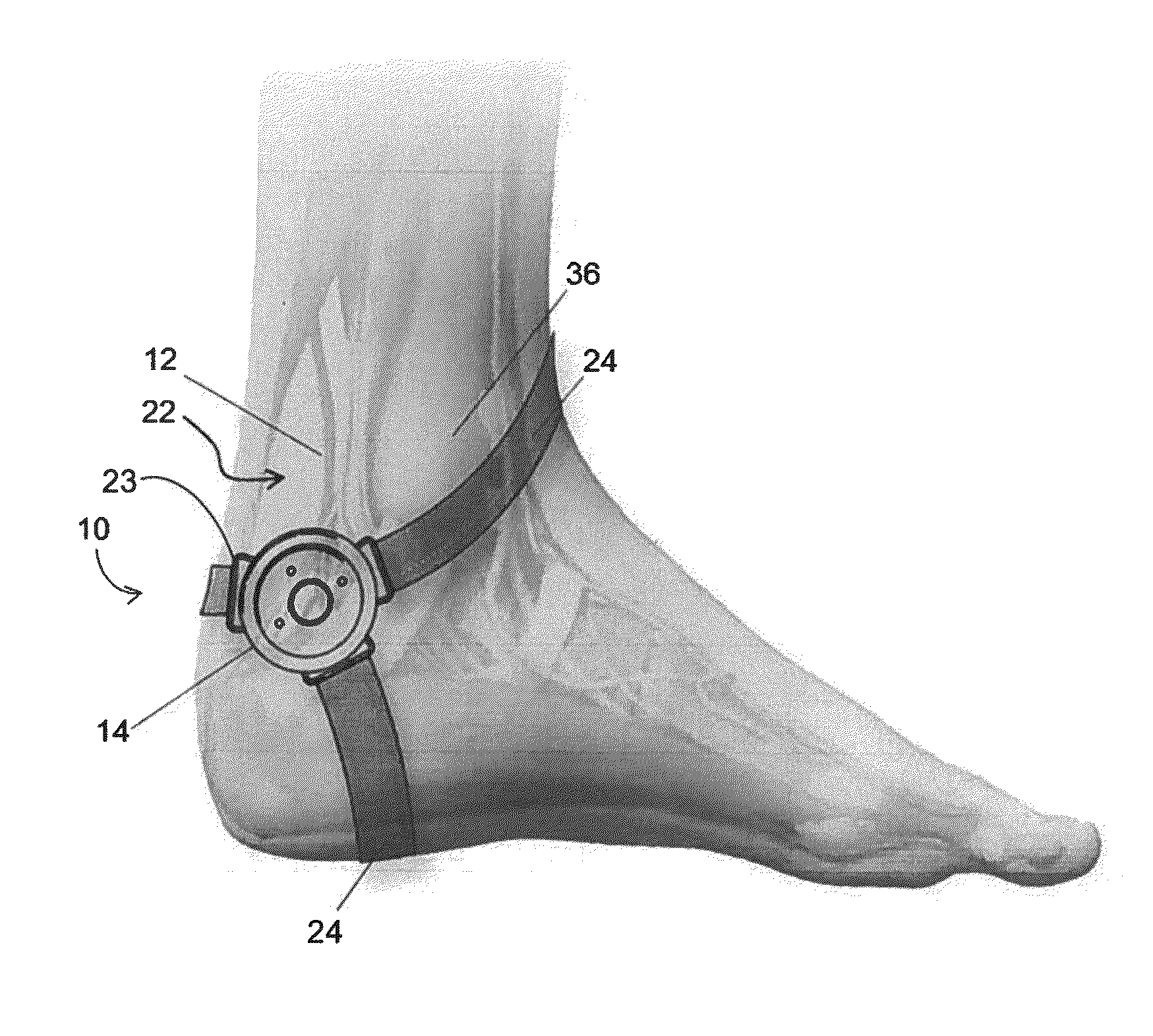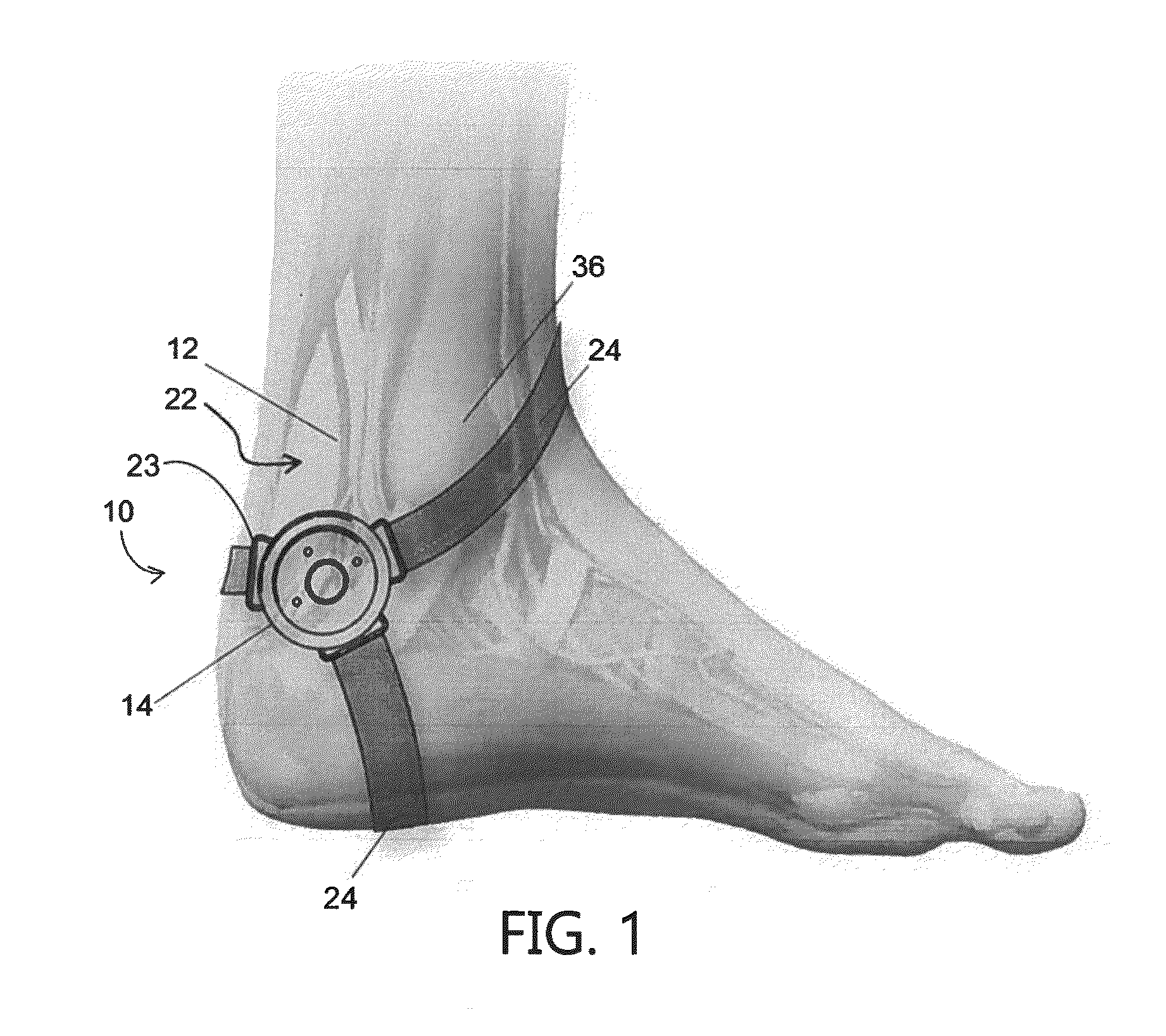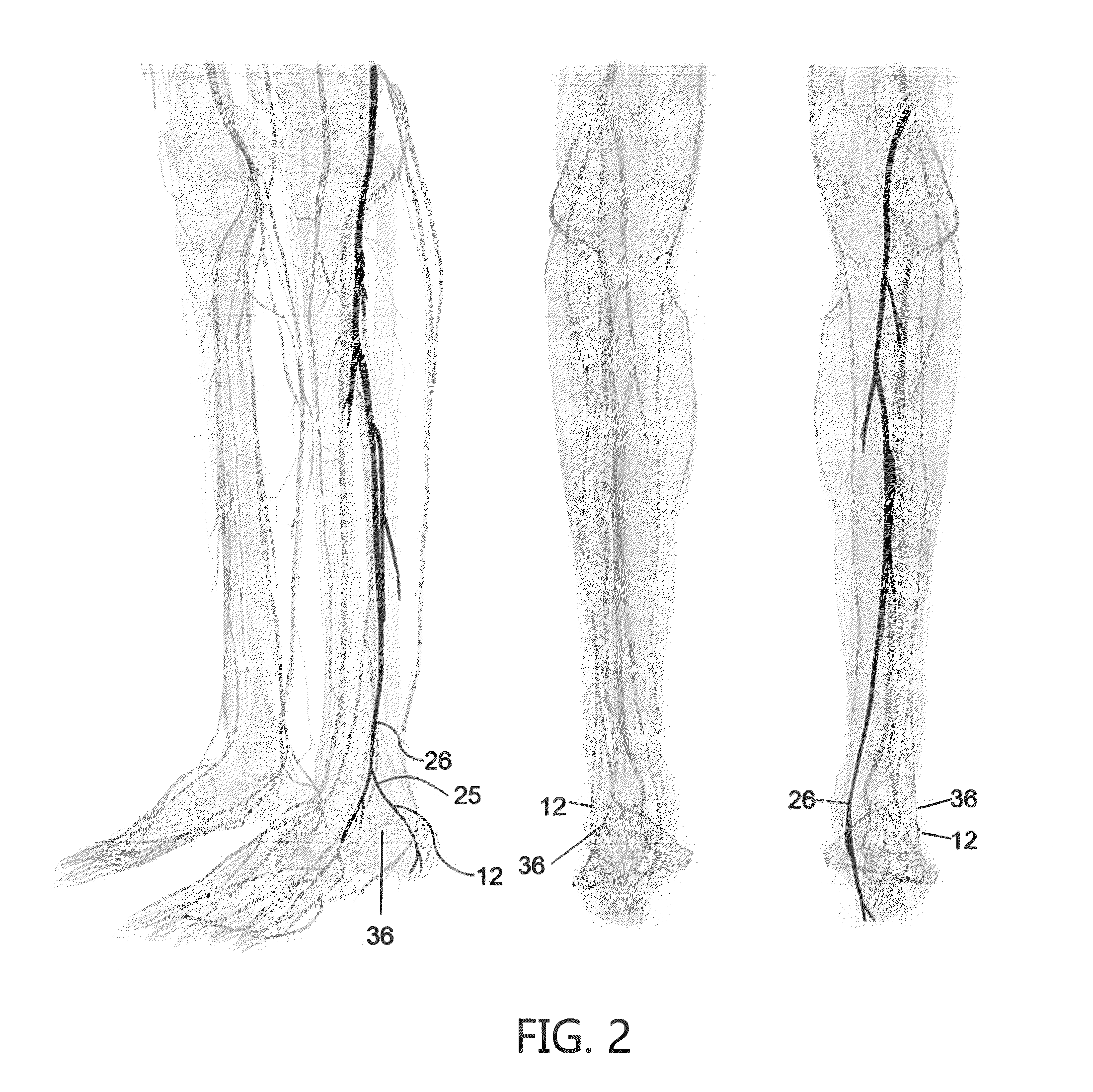Apparatus for transcutaneous electrical stimulation of the tibial nerve
a technology of tibial nerve and apparatus, which is applied in the field of electroacupuncture and noninvasive stimulation of nerves, can solve the problems of inability to fully activate or inhibit somatic and autonomic pathways, defects, and functional defects of nerves, and achieves the effects of improving flexibility of housing, low profile, and thin thickness
- Summary
- Abstract
- Description
- Claims
- Application Information
AI Technical Summary
Benefits of technology
Problems solved by technology
Method used
Image
Examples
Embodiment Construction
[0039]Now turning to the figures, FIGS. 1, 3-5, 5A and 6-8 illustrate embodiments of an electro-acupuncture or non-invasive nerve stimulation device 10 of the present invention. In a preferred embodiment, the device 10 is positionable on an ankle 12 of a patient. As illustrated, the device 10 comprises a housing 14, which encloses a pulse generator circuit 16 that controls the operation of the device 10. In addition, a power source 18, such as an electrochemical cell, is positioned within the housing 14 and is electrically connected to the pulse generator circuit 16 (FIG. 9). The electrochemical cell 18 provides electrical power to the device 10 as well as provides a power source for electrical stimulation of a nerve. The device 10 also comprises at least one electrode that is configured to be contactable to the skin of a human and facilitate electrical stimulation. As illustrated, the device 10 preferably comprises two electrodes 20A, 20B that extend through respective openings of ...
PUM
 Login to View More
Login to View More Abstract
Description
Claims
Application Information
 Login to View More
Login to View More - R&D
- Intellectual Property
- Life Sciences
- Materials
- Tech Scout
- Unparalleled Data Quality
- Higher Quality Content
- 60% Fewer Hallucinations
Browse by: Latest US Patents, China's latest patents, Technical Efficacy Thesaurus, Application Domain, Technology Topic, Popular Technical Reports.
© 2025 PatSnap. All rights reserved.Legal|Privacy policy|Modern Slavery Act Transparency Statement|Sitemap|About US| Contact US: help@patsnap.com



